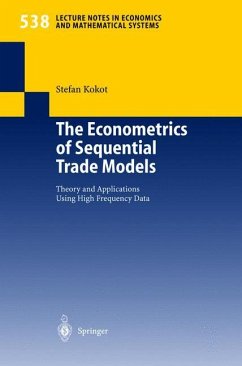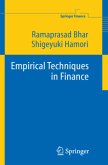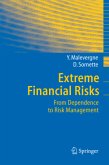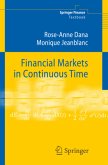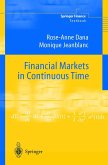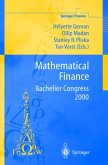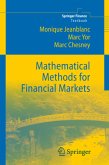This clearly structured and well-written reference work examines the consequences of speculative trading based on private information about financial asset markets. It presents an extensive and thorough discussion of theoretical and empirical methods used in previous studies on sequential trade models. The text also introduces a new framework for estimation and hypothesis testing that substantially advances earlier work in the field. The results that are necessary for understanding the introduced empirical framework are derived step-by-step. The text is ideally suited as a reference work on old and new results as well as a textbook for graduate courses on market microstructure theory, empirical methods in finance or econometrics.
The present study has been accepted as a doctoral thesis by the Depart ment of Economics of the Johann Wolfgang Goethe-University in Frankfurt am Main. It grew out from my five year long participation in two research projects, "Econometric analysis of transaction intensity and volatility on fi nancial markets", and "Microstructure on financial markets", that were both conducted by the chair of Statistics and Econometrics (Empirical Economic Research) at the Department of Economics and Business Administration, Jo hann Wolfgang Goethe-University in Frankfurt am Main and financed by the state of Hessen. During this time I have benefitted from many people. First and foremost I would like to thank my thesis supervisor, Prof. Dr. Reinhard Hujer, for initiating and supporting my studies with great encouragement. I am also very grateful to Prof. Dr. Christian Schlag for acting as the second thesis supervisor. Furthermore, I wish to thank Prof. Dr. Joachim Grammig who introduced me to thetopics covered in this study in the first place and helped me to sharpen my views on econometrics and financial market microstructure theory through many discussions and also through his willingness to work with me on several related studies.
The present study has been accepted as a doctoral thesis by the Depart ment of Economics of the Johann Wolfgang Goethe-University in Frankfurt am Main. It grew out from my five year long participation in two research projects, "Econometric analysis of transaction intensity and volatility on fi nancial markets", and "Microstructure on financial markets", that were both conducted by the chair of Statistics and Econometrics (Empirical Economic Research) at the Department of Economics and Business Administration, Jo hann Wolfgang Goethe-University in Frankfurt am Main and financed by the state of Hessen. During this time I have benefitted from many people. First and foremost I would like to thank my thesis supervisor, Prof. Dr. Reinhard Hujer, for initiating and supporting my studies with great encouragement. I am also very grateful to Prof. Dr. Christian Schlag for acting as the second thesis supervisor. Furthermore, I wish to thank Prof. Dr. Joachim Grammig who introduced me to thetopics covered in this study in the first place and helped me to sharpen my views on econometrics and financial market microstructure theory through many discussions and also through his willingness to work with me on several related studies.

